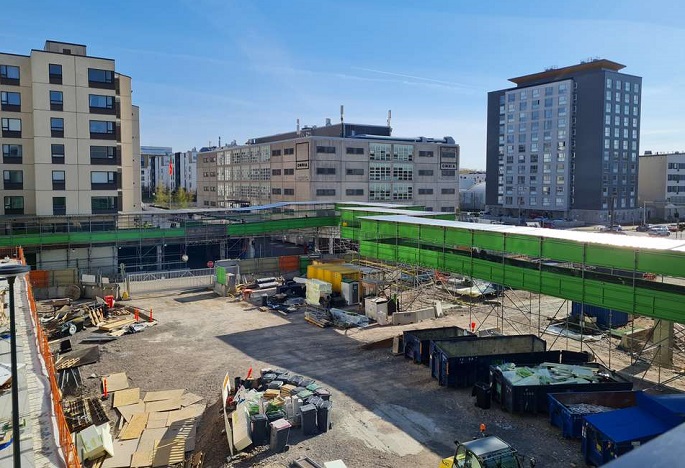Collapsed Espoo bridge´s structures were weak, dangerous: Probe report
Published : 29 Feb 2024, 00:42
Updated : 07 Mar 2024, 05:47
The structures of the bridge that collapsed in Espoo in May 2023 were inadequate and it was dangerous for its purpose of use, according to the investigation report published by the Safety Investigation Authority of Finland (Otkes) on Wednesday.
The report also recommended that the design and implementation of bridges in municipalities must be brought within the scope of compliance with the requirements.
The collapsed scaffolding bridge was a part of the temporary pedestrian routes in the Tapiola area. The City of Espoo had ordered the bridge from a scaffolding construction company operating in the area where the bridge was located in 2021.
The so-called Swiss cheese model is often mentioned in connection with safety investigation; it means that there might have been points in the chain of events that led to the incident in which the end result could have been prevented, but it did not happen.
In connection with the Espoo bridge accident, these holes were in the planning and inspection process surrounding it, said the report.
"The construction of the Tapiola scaffolding bridge was not recognised as building a bridge, and as a result, it was not subject to any standardised processes, such as safety requirements or technical supervision. Bridges in a municipal area are not subject to any kind of monitoring by the authorities, either – they are outside the scope of permit procedures and the legislation controlling them is unclear,” said Kai Valonen, Investigator-in-Charge.
"The scaffolding builder's standard solution for a bridge was not sufficient for its purpose of use. More structural design and application of the Eurocodes would have been needed. The bridge building expertise was not sufficient and the structures remained weak in many respects. The bridge was not inspected by any external party or authority, either. To sum up: the structures of the finished bridge were inadequate and it was dangerous for its purpose of use, and the deficiencies in safety were not noticed at any point,” Valonen added.
The safety investigation also studies the actions of the rescue services and other authorities. The investigation showed that the resources available for rescue operations were good and the operations themselves were effective.
However, in rescue services it is still good to pay attention to the communication between the authorities as well as the importance of planned and practised operating models in case of a major accident.
As a result of the investigation, the Safety Investigation Authority issued two recommendations. The first is targeted at the Ministry of the Environment as well as the Ministry of Transport and Communications, recommending that the ministries should develop procedures to ensure that the design and implementation process of temporary and permanent bridges in municipalities is also compliant with the requirements. The requirements must be clear and the operators in the field must be aware of them.
The second recommendation is targeted at the Confederation of Finnish Construction Industries RT (CFCI). The scaffolding sector should identify challenging bridge structures and allocate sufficient expertise to both their design and implementation.
The authority scaffolding bridges in Tapiola require repairs and further inspections and the temporary bridges will remain closed for the time being, according to a third-party inspection report on the collapse of a temporary bridge at the area on May 11, said the City of Espoo in a press release on Monday.


